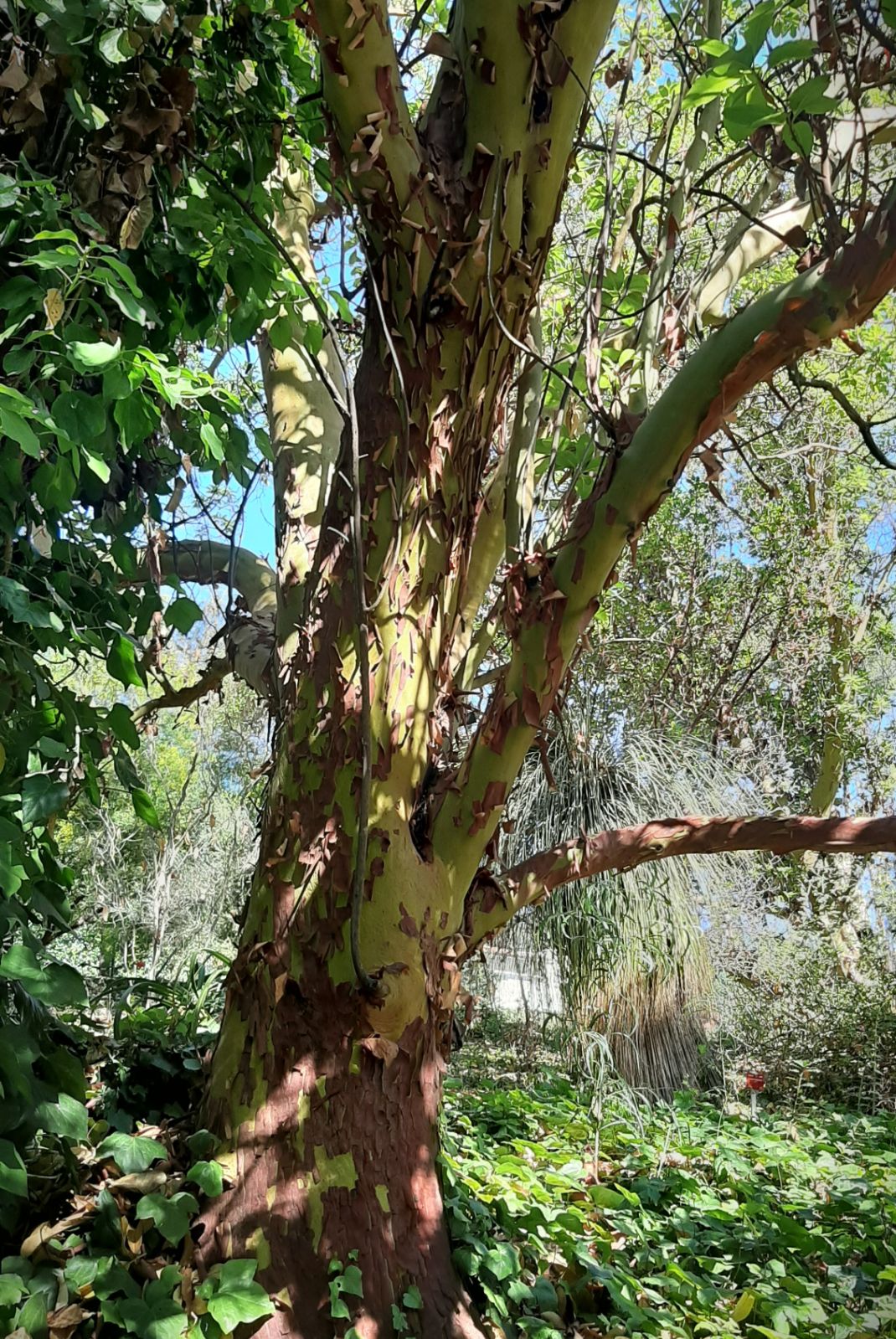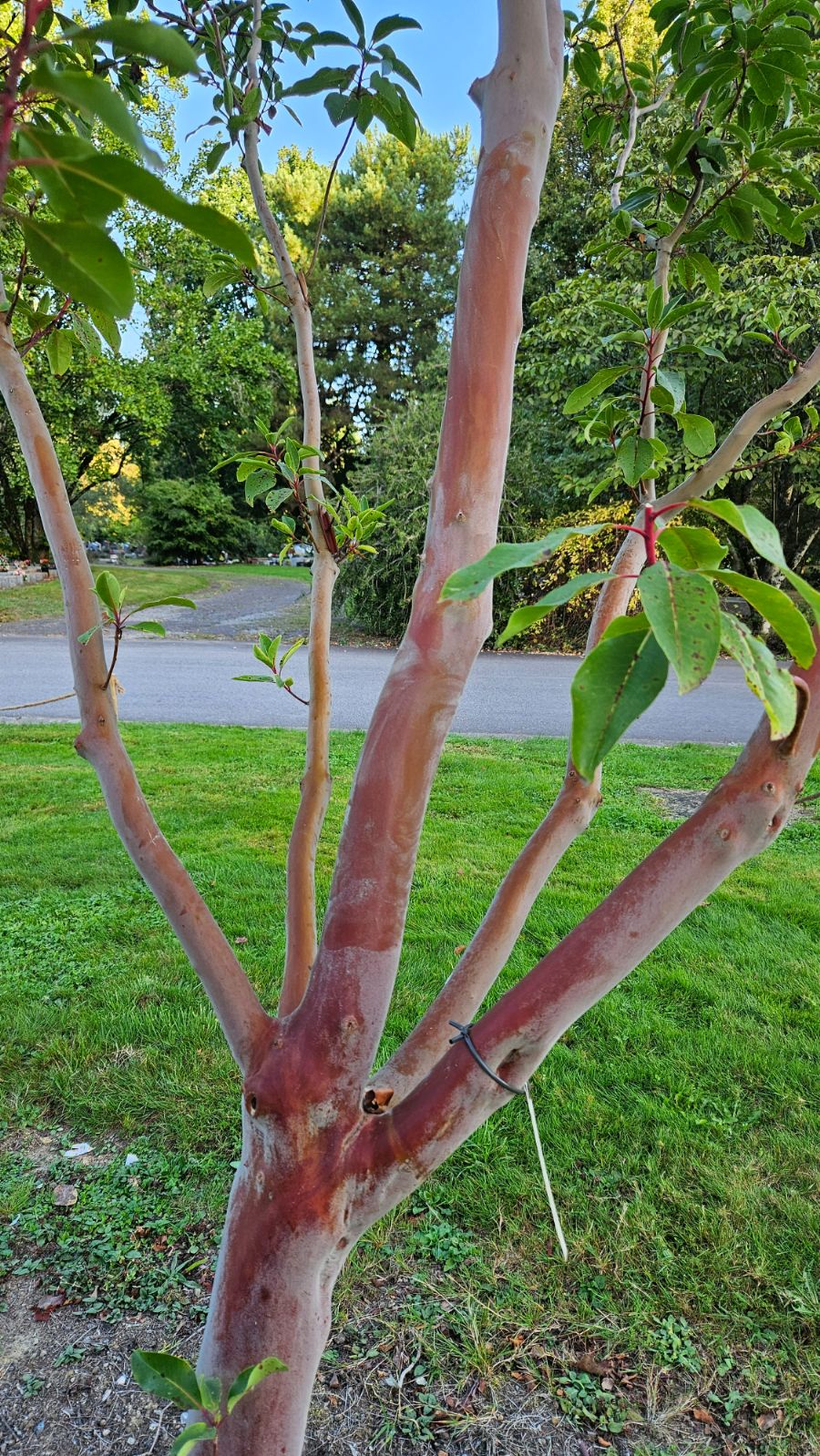Arbutus × thuretiana
Sponsor
Kindly sponsored by
a member of the International Dendrology Society
Credits
Julian Sutton (2021)
Recommended citation
Sutton, J. (2021), 'Arbutus × thuretiana' from the website Trees and Shrubs Online (treesandshrubsonline.
Genus
Common Names
- Arbousier du Thuret
Intermediate between A. andrachne and A. canariensis, and much resembling A. × reyorum, but with bark peeling rather than shedding in flakes. Differs from A. andrachne in its obviously glandular-hairy young shoots, and its larger leaves, mostly 2.5–3 times as long as broad. Differs from A. canariensis in its shorter leaves, rarely more than three times as long as broad (Demoly 2004).
USDA Hardiness Zone 8-9
RHS Hardiness Rating H4
This name covers hybrids between Arbutus andrachne and A. canariensis. They are known only from cultivation, arising several times from open-pollinated seed of A. canariensis taken from a large tree at the Villa Thuret, Antibes, on the French Riviera, and also from seed taken from A. andrachne at the same garden (Demoly 2004). The specific epithet commemorates the 19th century French botanist Gustave Thuret, a specialist in marine algae, who founded the Villa Thuret botanic garden. It has large, spreading, regularly spaced leaves rather resembling the Brush Box Lophostemon confertus, and peeling red bark which sheds in spring to reveal light beige-pink underbark which darkens in the sun; Demoly (2004) claims it as one of the loveliest trees growable on the Mediterranean and Atlantic coasts of France.
As well as seedlings established at Villa Thuret, several with Arbutus canariensis as the mother were raised at the Arboretum de Versailles-Chèvreloup near Paris in 1983 from the same source, but initially under the name A. glandulosa, as the parent tree was erroneously labelled at the time. A few more seedlings, labelled A. menziesii or A. glandulosa, were raised about the same time by Pépinière Jean Rey and Pépinière Filippi, France. Those at the Jean Rey nursery included some from open-pollinated A. andrachne as well as from A. canariensis (Demoly 2004).
This is a tree which deserves further experimental planting in our area, both in milder parts of the British Isles and on the Pacific seaboard of North America. It has been offered commercially in the UK by Pan-Global Plants (2021), from cuttings of the Filippi stock (N. Macer pers. comm. 2021).


